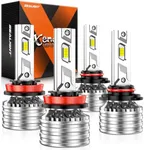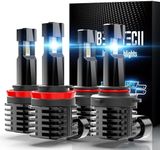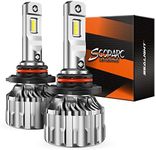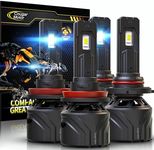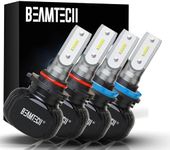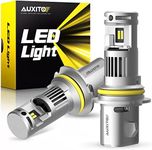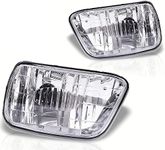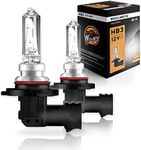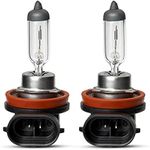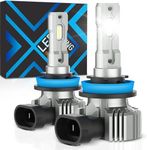Buying Guide for the Best LED Headlight Conversion Kits
Choosing the right LED headlight conversion kit can significantly improve your vehicle's lighting performance, safety, and overall driving experience. LED headlights are known for their brightness, energy efficiency, and long lifespan. However, with various options available, it's essential to understand the key specifications to make an informed decision. Here are the main factors to consider when selecting an LED headlight conversion kit.Brightness (Lumens)Brightness, measured in lumens, indicates how much light the LED headlight emits. This is important because brighter headlights improve visibility, especially in low-light conditions. LED headlights typically range from 6,000 to 12,000 lumens. For city driving, 6,000-8,000 lumens are usually sufficient. For rural or off-road driving, you might prefer 10,000-12,000 lumens for enhanced visibility. Choose a brightness level that matches your driving environment and needs.
Color Temperature (Kelvin)Color temperature, measured in Kelvin (K), describes the color of the light emitted by the LED headlights. This is important for visibility and comfort. LED headlights usually range from 3,000K to 6,500K. Lower values (3,000K-4,000K) produce a warm, yellowish light, which is good for foggy conditions. Mid-range values (4,500K-5,500K) produce a neutral white light, ideal for general driving. Higher values (6,000K-6,500K) produce a cool, bluish light, which can be more aesthetically pleasing but may cause glare. Choose a color temperature that suits your driving conditions and personal preference.
Beam PatternThe beam pattern determines how the light is distributed on the road. This is crucial for ensuring that the light covers the road adequately without blinding other drivers. Common beam patterns include low beam, high beam, and fog light. Low beams are designed for regular driving and provide a wide, short-range light. High beams offer a longer, narrower light for high-speed driving. Fog lights are designed to cut through fog and mist. Choose a beam pattern based on your driving habits and the conditions you frequently encounter.
CompatibilityCompatibility refers to whether the LED headlight conversion kit fits your vehicle's make and model. This is important to ensure proper installation and functionality. LED kits come in various sizes and types, such as H1, H4, H7, etc. Check your vehicle's manual or existing headlight bulb to determine the correct size. Ensure the kit you choose is compatible with your vehicle to avoid installation issues and ensure optimal performance.
LifespanLifespan indicates how long the LED headlights are expected to last, usually measured in hours. This is important for long-term reliability and cost-effectiveness. LED headlights typically last between 30,000 to 50,000 hours. A longer lifespan means fewer replacements and lower maintenance costs. Consider how often you drive and the conditions you drive in to choose a lifespan that meets your needs.
Cooling MechanismThe cooling mechanism helps dissipate heat generated by the LED headlights. This is important to prevent overheating and ensure the longevity of the lights. Common cooling mechanisms include fans and heat sinks. Fans actively cool the LEDs but can be noisy and require maintenance. Heat sinks passively dissipate heat and are maintenance-free but may not be as effective in extreme conditions. Choose a cooling mechanism based on your preference for maintenance and the typical driving conditions you face.
Ease of InstallationEase of installation refers to how simple it is to install the LED headlight conversion kit. This is important for convenience and ensuring a proper fit. Some kits are plug-and-play, meaning they can be installed without any modifications or special tools. Others may require additional wiring or adjustments. If you prefer a straightforward installation, look for plug-and-play kits. If you are comfortable with more complex installations, you may have more options to choose from.

